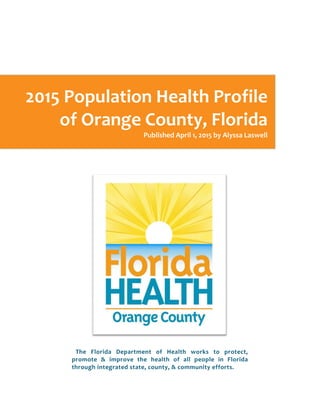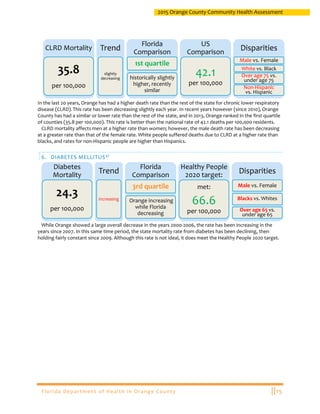This document provides a 2015 population health profile of Orange County, Florida. It summarizes key demographic and socioeconomic characteristics including the population size, density, growth rate, age, race/ethnicity distributions, and life expectancy. Orange County has a population of over 1.2 million residents, making it the 5th most populous county in Florida. It has experienced rapid population growth and has a younger population profile than the state overall. The county is also more racially and ethnically diverse compared to Florida.






























